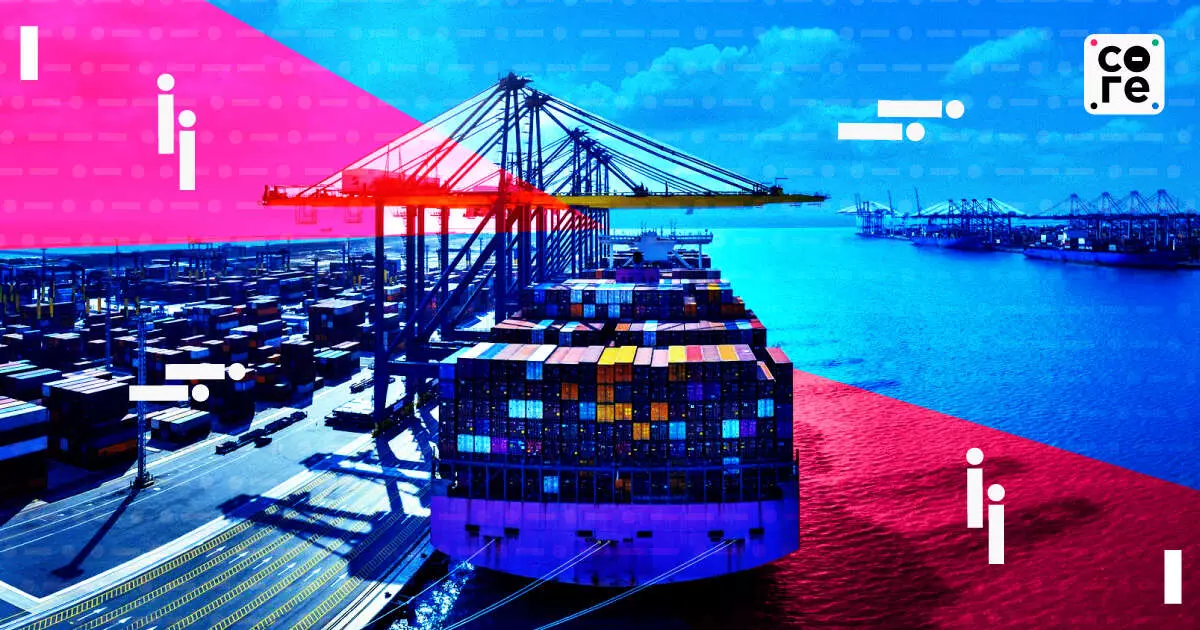
US-China Tariff Wars May Benefit Some Key Sectors In India
But these geopolitical uncertainties also come with a downside and India must be prepared.

On Tuesday, US President Donald Trump imposed a 10% tariff on goods from Beijing, China, reigniting a trade war between the world's largest economies.
China quickly retaliated against the new US tariffs and within minutes Beijing announced to impose levies of up to 15% on US coal, LNG, crude oil, farm equipment, and select automobiles.
But what does this mean to India?
“In the US, India directly competes with China in several key sectors, particularly labour-intensive industries like apparel, textiles, footwear, and gems and jewellery. The imposition of tariffs is likely to benefit India in these areas,” Ajay Sahai, director and CEO of the Federation of Indian Export Organisation (FIEO) told The Core.
This isn’t the first time the two countries have clashed. In 2018, China and the US were involved in a trade war when Trump increased tariffs on Chinese goods, and China retaliated.
Uncertainty Prevails
However, under the current situation experts are uncertain about the direct impact and specific benefits for India, as the full scope of the situation is still unfolding.
While India may see some advantages in sectors where it competes with China in the US market, the broader consequences, including potential disruptions to global supply chains or retaliatory measures, remain unclear.
“The US is not a strong producer. When it imposes tariffs on China, it makes sense because China is...
On Tuesday, US President Donald Trump imposed a 10% tariff on goods from Beijing, China, reigniting a trade war between the world's largest economies.
China quickly retaliated against the new US tariffs and within minutes Beijing announced to impose levies of up to 15% on US coal, LNG, crude oil, farm equipment, and select automobiles.
But what does this mean to India?
“In the US, India directly competes with China in several key sectors, particularly labour-intensive industries like apparel, textiles, footwear, and gems and jewellery. The imposition of tariffs is likely to benefit India in these areas,” Ajay Sahai, director and CEO of the Federation of Indian Export Organisation (FIEO) told The Core.
This isn’t the first time the two countries have clashed. In 2018, China and the US were involved in a trade war when Trump increased tariffs on Chinese goods, and China retaliated.
Uncertainty Prevails
However, under the current situation experts are uncertain about the direct impact and specific benefits for India, as the full scope of the situation is still unfolding.
While India may see some advantages in sectors where it competes with China in the US market, the broader consequences, including potential disruptions to global supply chains or retaliatory measures, remain unclear.
“The US is not a strong producer. When it imposes tariffs on China, it makes sense because China is a major supplier. The US has limited supply capabilities, mainly in agriculture, high-tech industries and aircraft. In terms of industrial products, it has almost nothing. That is why China is hitting back hard. But it's difficult for me to understand at this moment how will this impact or benefit India,” Ajay Srivastava, founder of the Global Trade Research Initiative (GTRI) told The Core.
In a further blow to US industries, China tightened controls on rare earth exports and metals essential for high-tech manufacturing and clean energy. The new Chinese tariffs will take effect on February 10, leaving a brief window for possible negotiations. Does this mean the tariff war might settle?
“It can be settled at any time. We saw the same with Canada—they imposed tariffs in retaliation, but after discussions with the Canadian PM, the measures were eventually postponed. So, anything is possible. If the other side offers some reassurance to the US, negotiations can take place, and positive developments cannot be ruled out,” Sahai said.
Trump, who paused a planned 25% tariff hike on Mexico and Canada in exchange for border security concessions, has warned of further escalation unless Beijing curbs fentanyl exports.
“I believe that with Canada and Mexico, the issue isn’t about imposing tariffs to protect the US market. Rather, it’s more about immigration and the influx of illegal drugs. The tariffs seem to be a pressure tactic. So, if these countries commit to tightening border controls and curbing narcotics flow, the tariffs will likely not be imposed,” Sahai said.
Since Donald Trump was elected, he has announced tariff hikes targeting China, Mexico, Canada and BRICS nations. In January 2025, Trump threatened to impose 100% tariffs on BRICS countries if they attempted to reduce the use of the US dollar in global trade.
India Must Prepare
In December 2024, Trump warned that BRICS nations would face 100% tariffs if they tried to replace the US dollar in international trade.
“Tariffs are more about making noise than delivering real impact. It’s more about creating a stir and instilling fear than achieving tangible results,” Srivastava said.
Markets reacted sharply to the tariff hikes. Oil prices dropped 2%, stocks in Hong Kong faltered, and global currencies reflected growing concerns over a prolonged trade war.
While Canada and Mexico secured temporary relief, a resolution between the US and China remains uncertain, with experts predicting continued volatility as tariffs become a recurring economic weapon.
“Uncertainty will persist and with Mr. Trump in office, we must be prepared for it. Given that the trade war has begun and countries are retaliating, this situation is likely to continue for another month or so. However, I anticipate that by April, conditions should largely stabilise,” Sahai added.
But these geopolitical uncertainties also come with a downside and India must be prepared.

